The aviation industry moved into a more relaxed phase in 1924. The main manufacturers seemed comfortable supplying their military or commercial niches, or both.
There was a definite uptick in interest in passenger travel, especially in larger more luxurious aircraft. The main protagonists from World War 1, Germany, France, United Kingdom and United States continued to hold the technical lead.
However, other players were knocking on doors, as the focus finally began to shift from cumbersome, wooden biplanes to sleeker, increasingly all-metal monoplanes.
JANUARY 1924
Czechoslovakian Avia BH-10 Aerobatic, Single-Seat Sports Plane
The Avia BH-10 that first flew on January 3, 1924 was developed from the earlier Avia BH-9. The latter was a low-wing braced monoplane that accommodated the pilot and passenger in tandem, open cockpits. But it also had a strengthened structure to allow for a more powerful, locally produced engine.
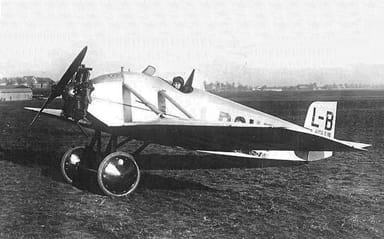
https://commons.wikimedia.org/wiki/File:Avia_BH-10_(L%27Ann%C3%A9e_a%C3%A9ronautique_1924-1925).jpg
However the Avia BH-10 was a single seater version with the sole purpose of displaying its pilot’s aviation skills. Although it did retain the anti-roll pylon added behind the open cockpit. This was to protect the pilot in the event that the aircraft flipped over or crashed while inverted.
The aircraft performed and flew well. So well in fact the Czechoslovakian Army purchased at least twenty examples, and used them for training under the designation B.10. The locally-manufactured Walter five-cylinder, air-cooled, radial engine added to the aircraft’s strategic manufacturing independence.
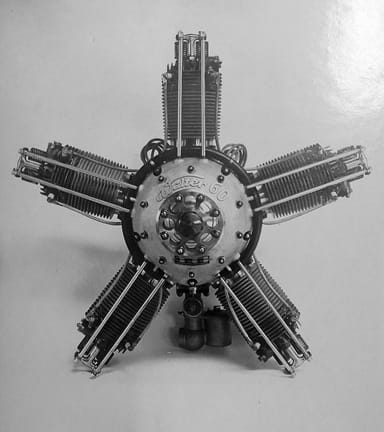
https://en.wikipedia.org/wiki/Walter_NZ_60#/media/File:Walter_NZ-60.jpg
The specification of the Avia BH-10 was as follows:
- Length 17.5 ft, height 7.5 ft, wing span 28.5 ft, wing area 105 sq ft
- Empty weight 635 lb, gross weight 913 lb, crew one
- Walter NZ 60 five-cylinder, air-cooled 317 cub inch radial engine
- Max speed 100 mph, range 300 mi, ceiling 14,600 ft, climb 656 ft / min
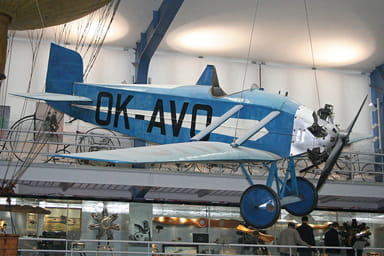
https://commons.wikimedia.org/wiki/Category:Avia_BH-10#/media/File:Avia_BH-10_OK-AVO_(8191804310).jpg
FEBRUARY 1924
Three French Army officers make the first two-way aerial crossing of the Sahara Desert in a Breguet 14 biplane bomber
MARCH 1924
Three British Royal Air Force officers depart from England in a Vickers Vulture II in an eastbound attempt to circumnavigate the world.
British Fairey Fawn Single-Engine Light Biplane Bomber
The Fairey Fawn was a single-engine, light biplane bomber. It was introduced in March 1924, and served with the Royal Air Force as a replacement for the Airco DH.9A between 1924 and 1929. It was built to the requirements of Specification 5/21 for an aircraft for daytime reconnaissance, and army cooperation duties.
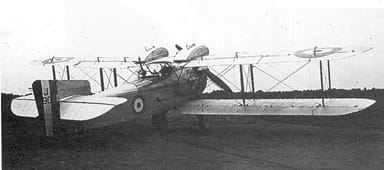
https://commons.wikimedia.org/wiki/File:Fairey_FawnA.jpg
The Fairey Fawn was effectively a development of the Fairey Pintail floatplane, and powered by a Napier Lion engine. The first prototype flew on March 8, 1923, whereafter two new versions were fitted with lengthened fuselages to improve stability, and this was adapted for the production version.
The aircraft entered service with three Royal Air Force squadrons in March 1924, although the remainder continued with the Airco DH.9A for several more years. It was not a great success among pilots, for the bulky engine partly obscured their view without returning markedly better performance.
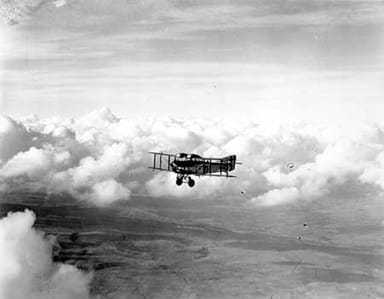
https://commons.wikimedia.org/wiki/File:Fairey_fawn.jpg
The specification of the Fairey Fawn was as follows:
- Length 32 ft, height 12 ft, wing span 50 ft, wing area 550 sq ft
- Empty weight 3,481 lb, gross weight 5,834 lb, crew two
- Napier Lion 12-cylinder, water-cooled broad arrow engine, 468 hp
- Max speed 114 mph, range 650 mi, ceiling 13,859 ft, 5,000 ft / 6.5 min
- One fixed, forward-firing 0.303 inch Vickers machine gun
- One / Two 0.303 inch Lewis guns on scarff ring in rear cockpit
- Bomb load: Up to 460 pounds of bombs held underwing
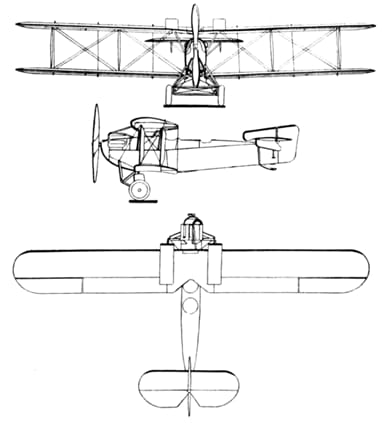
https://en.wikipedia.org/wiki/File:Fairey_Fawn_3-view_Les_Ailes_March_25,_1926.png
April 1924
The International Commission for Aviation passes a resolution stating that ‘women shall be excluded from any employment in the operating crew of an aircraft engaged in public transport.’
British passenger airline Imperial Airways opens for business. It continues operating through to 1939 with typically twenty-seater aircraft.
Four United States Army Air Service Douglas World Cruisers depart from Washington on a six-month westbound journey which will culminate in the first aerial circumnavigation of the world.
Two Portuguese aviators depart from Lisbon in a Breguet 16.Bn2 beginning an attempt to fly around the world.
Three French air force pilots leave from Paris in a Breguet 19.A.2 hoping to fly around the world.
French Farman F.140 Super Goliath Four-Engine Night Bomber
The Farman F.140 Super Goliath was designed in France in the early 1920’s, and set several world records for altitude reached with heavy useful loads during prototype testing. The French Air Force purchased nine after prototyping. However, it later fell out of favor over concerns about structural weaknesses in 1930.
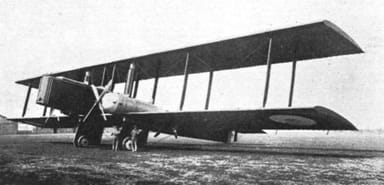
https://en.wikipedia.org/wiki/File:Farman_F.140_Super_Goliath.jpg
This aircraft should not be confused with the sole Farman BN.4 of 1922, of which only one was made. The F.140 was slightly larger, with triple bay biplanes with staggered, constant chord, square tipped wings, and a wide interplane gap. It had two pairs of tractor-pusher engines driving four, four-blade propellers.
The Farman F.140 Super Goliath was initially off to a good start, with several new load-related world aviation records achieved. However, the French Air Ministry later developed concerns about the safety of all Farman multi-motor aircraft, following a number of accidents. And it grounded all the Farman F.140’s in September 1930.

https://commons.wikimedia.org/wiki/File:Farman_Super_Goliath_cockpit_L%27A%C3%A9rophile_March,1926.jpg
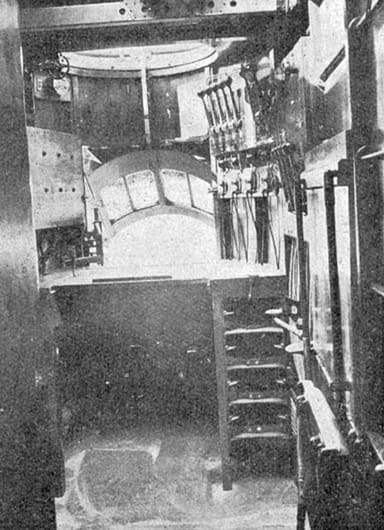
https://commons.wikimedia.org/wiki/File:Farman_Super_Goliath_bombardier_station_L%27A%C3%A9rophile_March,1926.jpg
The specification of the Farman F.140 Super Goliath was as follows:
- Length 65.5 ft, height 21.5 ft, wing span 103 ft, wing area 2,594 sq ft
- Empty weight 16,987 lb, gross weight 25,997 lb, crew six
- Four Farman 12We W-12 water-cooled engines, 500 hp each
- Max speed 113 mph, range 250 mi, ceiling 21,300 ft, 13,000 ft / 26 min
- Armament: Machine guns including on front platform, 6,610 lb bomb load
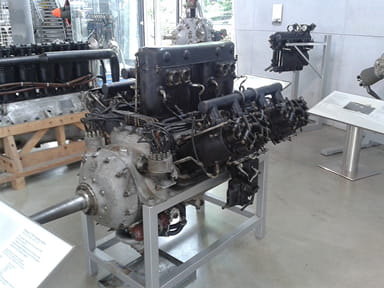
https://en.wikipedia.org/wiki/Farman_12We#/media/File:Flugwerft_Schlei%C3%9Fheim_6.jpg

https://en.wikipedia.org/wiki/Farman_F.140_Super_Goliath#/media/File:Farman_F.140_Super_Goliath_3-view_Les_Ailes_February_26,_1926.png
MAY 1924
A Royal Australian Air Force crew completes the first aerial circumnavigation of Australia in a Fairey IIID
French Levasseur PL.5 Two-Seater Carrier-Based Biplane Fighter
The Levasseur PL.5 was produced in response to a government specification. It was a conventional single-bay sesquiplane with smaller lower wings, that carried a crew of two in tandem, open cockpits. It first flew in May 1924 and incorporated several safety features in the event of ditching at sea.
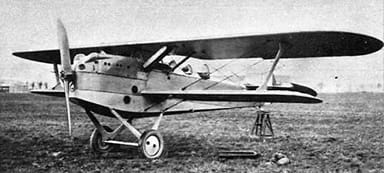
https://en.wikipedia.org/wiki/File:Gpl5.jpg
These safety features for ditching went beyond small floats attached directly to the undersides of the lower wing. The underside of the watertight fuselage also had a boat-like shape, and the fixed, tail-skid undercarriage could be jettisoned in flight.
The French naval authority ordered 20 machines, specifically for a new aircraft carrier Béarn due for completion in 1927. There were also 6 trainer versions with lower-powered engines designated PL.9.
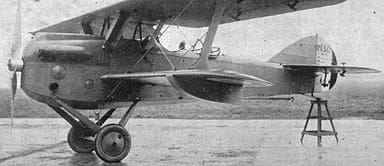
https://commons.wikimedia.org/wiki/File:Levasseur_PL.5_L%27A%C3%A9ronautique_December,1926.jpg
The specification of the Levasseur PL.5 V AM C.2B prototype was as follows:
- Length 28 ft, height 10.5 ft, wing span 40.5 ft, wing area 400 sq ft
- Empty weight 3,153 lb, gross weight 4,475 lb, crew two
- Renault 12Kd V-12 water-cooled piston engine, 480 hp
- Max speed 120 mph, range 500 mi, ceiling 20,000 ft
- Two fixed, forward firing 0.303 inch Vickers machine-guns forward
- Two 0.303 inch Lewis machine-guns on scarff ring in the rear cockpit.

https://commons.wikimedia.org/wiki/File:Renault_12Kd_-_Mus%C3%A9e_Safran.jpg
British Westland Dreadnought World’s First Blended Wing Aircraft
We generally exclude unsuccessful aircraft from the history of flight because they failed to make a substantive contribution. However, the Westland Dreadnought is a notable exception, because it showed wings with no clear dividing line from the fuselage could work in principle.
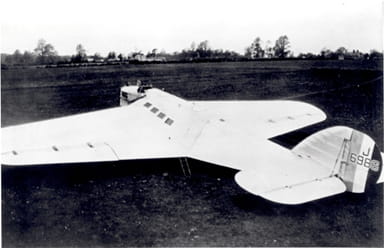
https://en.wikipedia.org/wiki/File:G3806.jpg
Engineer / visionary Nicolas Woyevodsky developed the idea of reducing drag, and the wetted area of the wing that interacted with the air in the 1920’s. He hoped this would allow the entire aircraft to generate lift, and thus reduce the size and drag of the wings.
The Westland Dreadnought attempted its first flight on May 9, 1924 after successful taxi trials, and short hops. It was stable at first when actually in the air, although the pilot shortly began losing control. The experimental aircraft stalled at an altitude of 100 feet seriously injuring the pilot, and the project was abandoned.
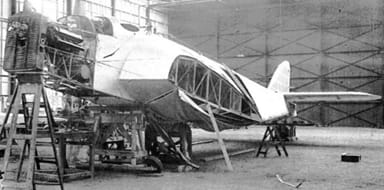
http://www.yeovilhistory.info/westland-dreadnought.htm
The specification of the Westland Dreadnought was as follows:
- Length 56 ft, height 16.5 ft, wing span 69.5 ft, wing area 840 sq ft
- Empty weight 5,623 lb, gross weight 6,900 lb, crew two, eight passengers
- Napier Lion II W12 12-cylinder ‘broad arrow’ engine 450 hp, 102 mph
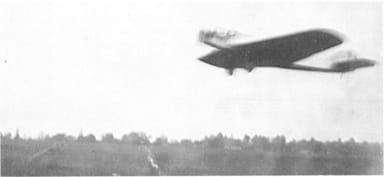
http://www.yeovilhistory.info/westland-dreadnought.htm

https://en.wikipedia.org/wiki/Napier_Lion#/media/File:Napier_Lion_W12_@_Brooklands_Museum.JPG
JUNE 1924
French pilot Joseph Sadi-Lecointe wins the Coupe Beaumont race in a Nieuport-Delage NiD 42S. He sets a new world record over 301 miles averaging 190 miles per hour.
American Lieutenant Russell Maughan makes the first one-day crossing of the United States from Long Island, New York, to San Francisco, California, in a Curtiss PW-8 in 21 hours 48 minutes.
French Blériot-SPAD S.51 Fighter with a Twist in the Propeller
The Blériot-SPADS.51 fighter was a state-of-art biplane, designed for the French Air Force to replace their obsolete Nieuport-Delage NiD.29 fleet. However, they turned it down flat even after Blériot modified it, although the Polish Air Force purchased 50, and the Turkish and Soviet air forces each bought one.
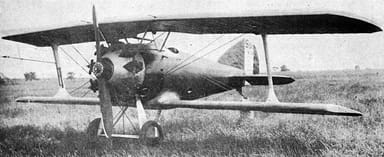
https://en.wikipedia.org/wiki/File:Bleriot_SPAD_S.51_L%27A%C3%A9ronautique_December,1926.jpg
The Blériot-SPAD S.51 was a classic biplane design, but with a swept upper wing and un-swept lower wing. These were made of metal, and joined by I-shaped interplane struts which were a departure for Blériot. Later, its designer André Herbemont added a final twist by fitting the first variable-pitch propeller developed in France to one aircraft.
Variable-pitch propellers allow their blades to be rotated along their longitudinal axis. The pilot varies this manually, in the controllable version with a constant-speed propeller. Whereas, in variable configurations, pitch adjusts automatically according to engine speed.
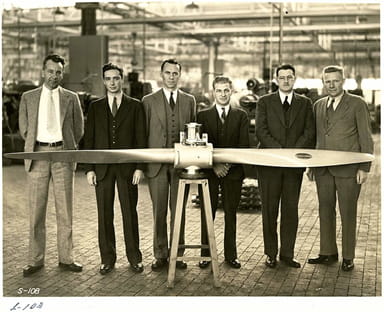
https://commons.wikimedia.org/wiki/File:1,000th_Controllable_Pitch_Propeller_produced_by_Hamilton_NASM-NAM-A-3738.jpg
The specification of the Blériot-SPAD S.51 was as follows:
- Length 21 ft, height 10 ft, wing span 31 ft, wing area 261 sq ft,
- Empty weight 2,183 lb, gross weight 2,998 lb, crew one
- Gnome & Rhône 9Ab Jupiter 9-cylinder air-cooled radial piston engine 420 hp
- Max speed 152 mph, climb 1,420 ft / min, 13,000 ft / 9 min
- Two fixed, forward-firing 0.303 inch Vickers machine-guns
German Focke-Wulf A.16 Light Passenger Monoplane
The Focke-Wulf A.16 was an unusual aircraft for its day, that put function before form. Nonetheless, the brainchild of Heinrich Focke and Georg Wulf managed to sell 20 airplanes, which was impressive for the fledgling company’s first design.
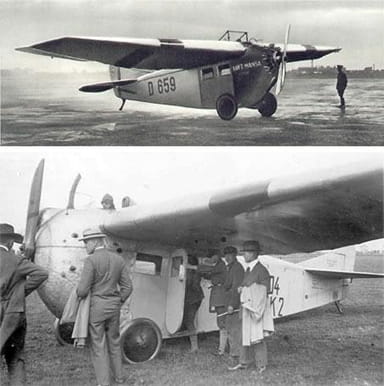
http://histaviation.com/fw_a16.html
The A.16 was an all-wood, high-wing cantilever monoplane of conventional configuration covered over with fabric, but with a thick, relatively large airfoil wing and the pilot sitting in an open cockpit looking over. As many as 23 aircraft were made during the production run.
The closed passenger cabin had wicker chairs and was right behind the pilot’s location. Airline Luft Hansa deployed over five A 16 and A 16a aircraft. At the end of 1929 the two original aircraft built in 1925 were still flying.
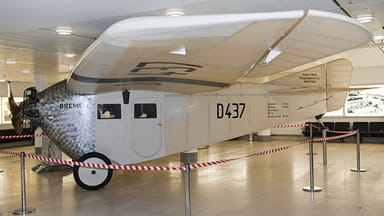
https://en.wikipedia.org/wiki/File:Focke-wulf1_hg.jpg
The specification of the Focke-Wulf A.16 was as follows:
- Length 27.5 ft, height 7.5 ft, wing span 45.5 ft, wing area 291 sq ft
- Empty weight 1,245 lb, gross 2,138 lb, crew one, three / four passengers
- Siemens-Halske Sh 11 7-cylinder radial piston engine, 75 hp
- Max speed 84 mph, range 342 mi, ceiling 8,200 ft
JULY 1924
A regular overnight air postal service commences in U.S. linking Chicago, Illinois, with Cheyenne, Wyoming.
Imperial Japanese bombers take four hours to sink a retired 14,000-ton coastal defence battleship using level bombing from an average height of 3,281 feet.
French Captain Georges Pelletier d’Oisy completes a flight from Paris to Tokyo, using a Breguet 14. The journey from Paris takes 120 hours in the air over 84 days.
AUGUST 1924
Italian Savoia-Marchetti S.55 Double-Hull Passenger Flying BoaThe Savoia-Marchetti S.55 was a double-hulled, monoplane flying boat that first flew in August 1924, and soon began setting records for speed, payload, altitude and range. Its passengers were accommodated in two separate hulls, with the crew above the wings directly beneath two, counter rotating engines which inclined sharply upwards.
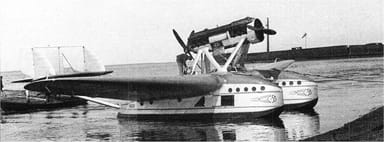
https://en.wikipedia.org/wiki/File:Aeroflot_Savoia-Marchetti_S.55P.jpg
The Savoia-Marchetti S.55 was a remarkably airworthy craft despite its unusual design. In 1926 it set 14 world records for speed, altitude and distance with a payload. However, its greatest triumph was its many flights between Europe and the Americas.
It also deserved a place in history when a Savoia-Marchetti S.55 landed on an ice floe in the Arctic to rescue survivors from Umberto Nobile’s crashed airship Italia. It also served as a long-range bomber and patrol aircraft into the mid-1930’s.
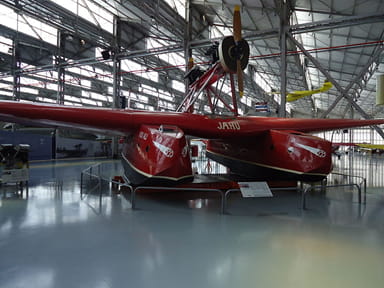
https://commons.wikimedia.org/wiki/File:Museu_TAM_-_Jahu.JPG
The specification of the Savoia-Marchetti S.55 was as follows:
- Length 54 ft, height 16.5 ft, wing span 78.5 ft, wing area 990 sq ft
- Empty weight 12,667 lb, gross weight 18,210 lb, 2 pilots, 3 to 4 crew
- Two Isotta Fraschini Asso 500 V-12 water-cooled piston engines 500 hp
- Max speed 127 mph, stall 65 mph, range 750 mi, 3,300 ft in 9 min
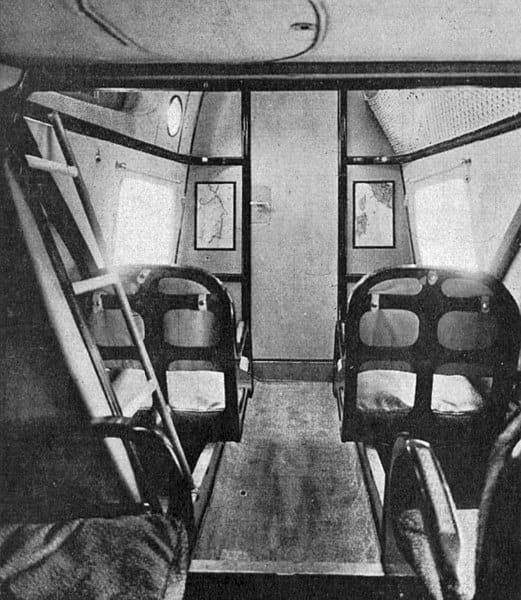
https://commons.wikimedia.org/wiki/File:Savoia-Marchetti_S.55_cabin_L%27A%C3%A9ronautique_November,1929.jpg
French Potez 27 Reconnaissance Biplane / Bomber
The French Potez 27 was a French fighter plane the company sold mainly to Poland but also to Romania.A total 206 aircraft were made after the first flight in August 1924. The prototype later appeared at the Rally of the Aéro-Club in 1926, and 1928.
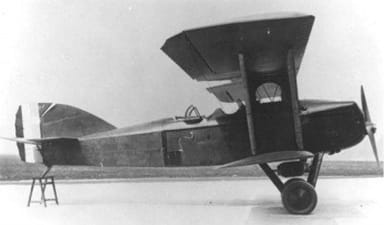
https://www.armedconflicts.com/Potez-27-A-2-t60096
The Potez 27 was a hybrid of Potez 25 wings, and most of the remainder from the Potez XV. Accordingly, it was an unequal span, single bay biplane with a pair of parallel, outward leaning interplane struts on each side, aided by flying wires. The fuselage was flat sided, with a curved decking over most of its length.
The pilot and gunner tandem cockpits were well ahead of the slightly curved fin, and balanced rudder merging smoothly into the wooden Potex XV fuselage. The French air force failed to order, although the Polish military purchased 20, and subsequently manufactured 155 more under license.

http://www.aviastar.org/air/france/potez-27.php
The specification of the Potez 27 was as follows:
- Length 28.5 ft, height 11 ft, wing span 45 ft, wing area 480 sq ft
- Empty weight 2,756 lb, gross weight 4,200 lb., crew two
- Lorraine-Dietrich 12Db upright V-12 engine, water cooled, 400 hp
- Max speed 134 mph, service ceiling 22,000 ft, 12 min to 9,840 ft
- Twin 0.303 inch Lewis guns in rear cockpit, up to 440 lb bomb load

https://en.wikipedia.org/wiki/Lorraine_12D#/media/File:Lorraine_400hp_aircraft_engine_front-left_2010_The_Sky_and_Space.jpg
British Hawker Cygnet Ultralight Biplane Aircraft
The Hawker Cygnet was a two-person biplane designed for the 1924 Royal Aero Club Light Aircraft Competition. As such, it kept the flame of personal airplanes alight in an industry dominated by large orders. It first flew in August 1924. Then two aircraft entered the competition at Lympne Aerodrome where they both performed well.
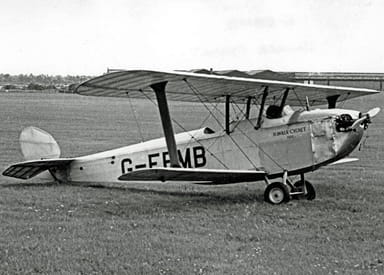
https://en.wikipedia.org/wiki/File:Hawker_Cygnet_G-EBMB_BAG_19.06.54_edited-2.jpg
The Hawker Cygnet was a traditional construction, with fuselage and wings made of wood and fabric stretched over. The body comprised four strutted longerons, while the wings had two similar box spars. One Cygnet won the handicap flying competition at an average speed of 75 mph.
Only one of the two Cygnets survived in storage at Hawker. Then it was refurbished in 1946, and flew at various displays and air shows. It now enjoys a well-deserved rest at RAF Cosford. The Shuttleworth Collection has an airworthy replica in Bedfordshire.
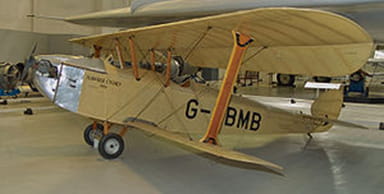
https://en.wikipedia.org/wiki/File:Hawker_Cygnet_Cosford_crop.jpg
The specification of the Hawker Cygnet was a follows:
- Length 20.5 ft, height 5.5 ft, wing span 28 ft, wing area 165 sq ft
- Empty weight 373 lb, gross weight 950 lb, crew two
- Bristol Cherub III 2-cylinder piston engine, 34 hp
- Max speed 83 mph, service ceiling 8,900 ft, 11 min to 5,000 ft
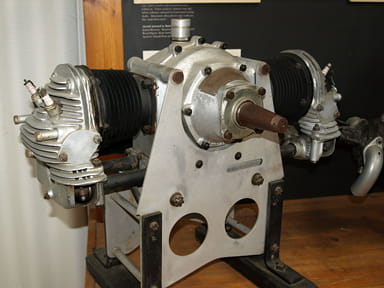
https://en.wikipedia.org/wiki/Bristol_Cherub#/media/File:BristolCherub.JPG
SEPTEMBER 1924
German Junkers G-24 All-Metal Monoplane Passenger Aircraft
The Junkers G-24 was a three-engine passenger airplane that first flew on September 19, 1924. It was designed to meet increasing demand for larger passenger aircraft. Some 72 were built in Germany, with more manufactured in Sweden. There were also single-engine versions designated Junkers F-24.
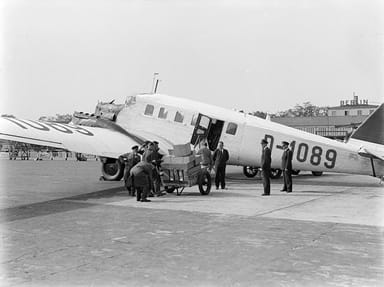
https://commons.wikimedia.org/wiki/File:Kar_met_een_lading_pakketten_bij_de_Junkers_G24_D-1089_Hestia_die_voor_de_luftha,_Bestanddeelnr_190-0059.jpg
The Treaty of Versailles imposed limits on German aircraft engine output. And so Junkers designed their large G24 airliner to be single-engined, but built it as a tri-motor machine.
Their plan was to sell it to foreign customers, who would then install a single, high-powered engine in the nose. However, the Allied Commission declared it a military aircraft, and outlawed it.
Eventually they relented, and agreed to the similar G 23 version because it was clearly an airline type, but able to fly on two engines in case of mechanical problems. Junkers then marketed it as a G 24 and it proved successful in many roles.
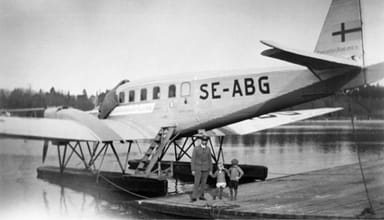
https://commons.wikimedia.org/wiki/File:Junker_G_24,_ABA.jpg
The specification of the Junkers G24he was as follows:
- Length 51.5 ft, height 19 ft, wing span 96.4 ft, wing area 1,070 sq ft
- Empty weight 9,546 lb, gross weight 15,873 lb, crew two, fourteen passengers
- Three Junkers L5 6-cyl. in-line water-cooled piston engines, 310 hp each
- Max 130 mph, cruise 110 mph, range 410 mi, max-load-ceiling 13,000 ft

https://commons.wikimedia.org/wiki/File:Junkers_G.24_cabin_L%27A%C3%A9ronautique_November,1926.jpg
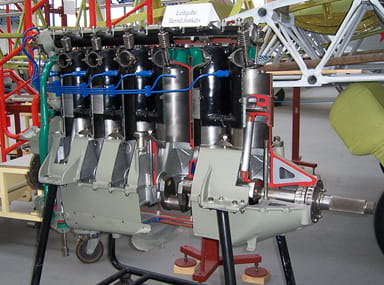
https://en.wikipedia.org/wiki/Junkers_L5#/media/File:Junkers_L_5_im_Technikmuseum_Hugo_Junkers_Dessau_2010-08-06_01.jpg
British Westland Widgeon Light Civil Aircraft
The Westland Widgeon was a commercial response to a UK government expressed desire to encourage the development of cheap civil aircraft, suitable for use by private owners and flying clubs. The single-engine, parasol monoplane had its first flight on September 22, 1924. Westland built 26 before abandoning production in 1929.
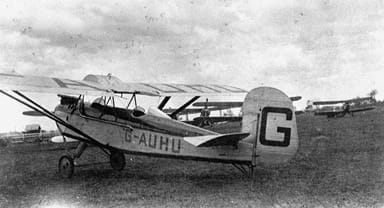
https://en.wikipedia.org/wiki/File:StateLibQld_1_192503_G-AUHU,_Westland_Widgeon_III_aeroplane,_ca._1928.jpg
The British Air Ministry stimulated interest by sponsoring a competition for a two-seat ultralight aircraft. This had to be powered by an engine of 76 cubic inch displacement or less, and capable of carrying a load of at least 340 lb. Westland built two aircraft made of mixed steel and wooden construction.
The first aircraft crashed badly on the first attempt due to an underpowered Thrush engine. However, the replacement Armstrong Siddeley one was a success and entered into production. Unfortunately, the final product was expensive compared to competitors. Westland abandoned the project to concentrate on military aircraft and passenger airliners.
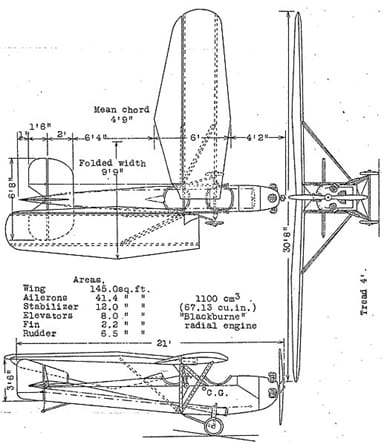
https://en.wikipedia.org/wiki/File:Westland_Widgeon_3-view_NACA-TM-289.jpg
The specification of the Westland Widgeon IIIA was a follows:
- Length 23.5 ft, height 8.5 ft, wing span 36.5 ft, wing area 200 sq ft
- Empty weight 935 lb, max take-off weight 1,650 lb, crew two
- Cirrus Hermes II 4-cylinder air-cooled in-line piston engine, 120 hp
- Max 104 mph, cruise 86 mph, range 315 mi, ceiling 15,000 ft, climb 640 ft / min

https://en.wikipedia.org/wiki/Cirrus_aero_engines#/media/File:Cirrus_Hermes.jpg
OCTOBER 1924
United States Curtis P-1 Hawk Open Cockpit Biplane Fighter
The Curtis P-1 Hawk was a derivation of the company’s R-6 Racer that achieved 194 mph in 1923. Converting this into a serviceable military aircraft did not prove straightforward. However, the U.S. Army was sufficiently satisfied to accept delivery of the third XPW-8 prototype in October 1924 that became the P-1 fighter.
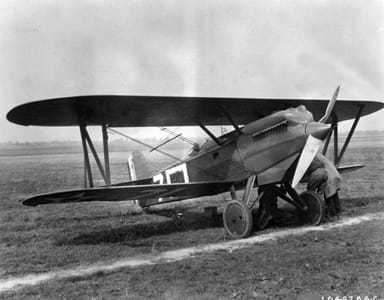
https://en.wikipedia.org/wiki/File:PW-8_aircraft.jpg
The Hawk P-1 proved to be an exceptional machine, with a total 202 manufactured as PW-8, P-1, P-2, P-3, P-5, AT-4 and AT-5 designations. They served with 17th, 27th, and 94th Pursuit Squadrons from 1925 onwards, but were also used as trainers with 43rd Pursuit Squadron School.
The specification of the Curtis P-1C was as follows:
- Length 23 ft, height 8.5 ft, wing span 31.5 ft, wing area 252 sq ft
- Empty weight 2,195 lb, gross weight 2,973 lb, crew one
- Curtiss D-12C (Curtiss V-1150-3) V-12 water-cooled piston engine, 422 hp
- Max speed 154 mph, cruise speed 123 mph
- Range 300 mi, service ceiling 20,800 ft, climb 1,460 ft /min
- Two 0.30 inch fixed forward-firing M1919 Browning machine guns

https://en.wikipedia.org/wiki/Curtiss_D-12#/media/File:Curtiss_D-12_2.jpg
NOVEMBER 1924
The Pitcairn Flying School and Passenger Service forms. It later became Eastern Airlines that continued operating until 1991.
American Lieutenant Dixie Kiefer makes the first night catapult launch from a ship in a Vought UO-1 biplane using only the vessel’s searchlights.
A KLM Fokker F.VII makes the first flight from the Netherlands to the Dutch East Indies, taking 127 hours 16 minutes.https://en.wikipedia.org/wiki/Fokker_F.VII
DECEMBER 1924
An American Martin MO-1 observation monoplane launches from a battleship turret using an explosive-driven catapult fitted to a turret, and shortening the take-off distance.
United States Martin MO-1 Observation Monoplane
The Martin MO-1 was an American observation monoplane Glenn L. Martin Company of Cleveland, Ohio built for the U.S. Navy. This followed military interest in thick aerofoil-section cantilever wings, under development by Dutch company Fokker.
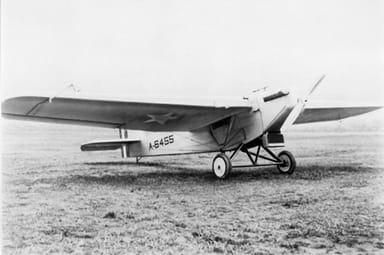
https://calisphere.org/item/3b916a3daf759127a8d4f362d8581408/
The U.S. Navy studied the Fokker concept, and designed a three-seat observation monoplane employing a similar wing. They then contracted Glenn L. Martin Company to build 38 aircraft.
The Martin MO-1 was a shoulder-wing cantilever monoplane with a slab-sided fuselage, and a fixed tailwheel landing gear. It had an all-metal structure with a fabric covering. In December 1924 a version with float gear launched from an explosive-driven catapult fitted to a turret of battleship USS Mississippi.
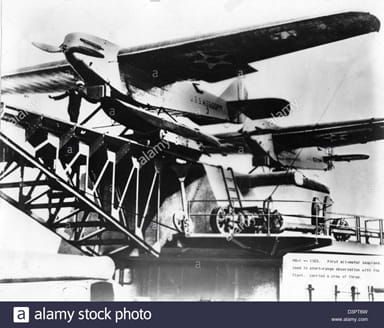
https://www.alamy.com/stock-photo-martin-mo-1-00545-53977025.html
The available specification of the Martin MO-1 was as follows:
- Wing span 53 ft, crew two, max speed 105 mph, Curtiss D-12 engine, 435 hp








